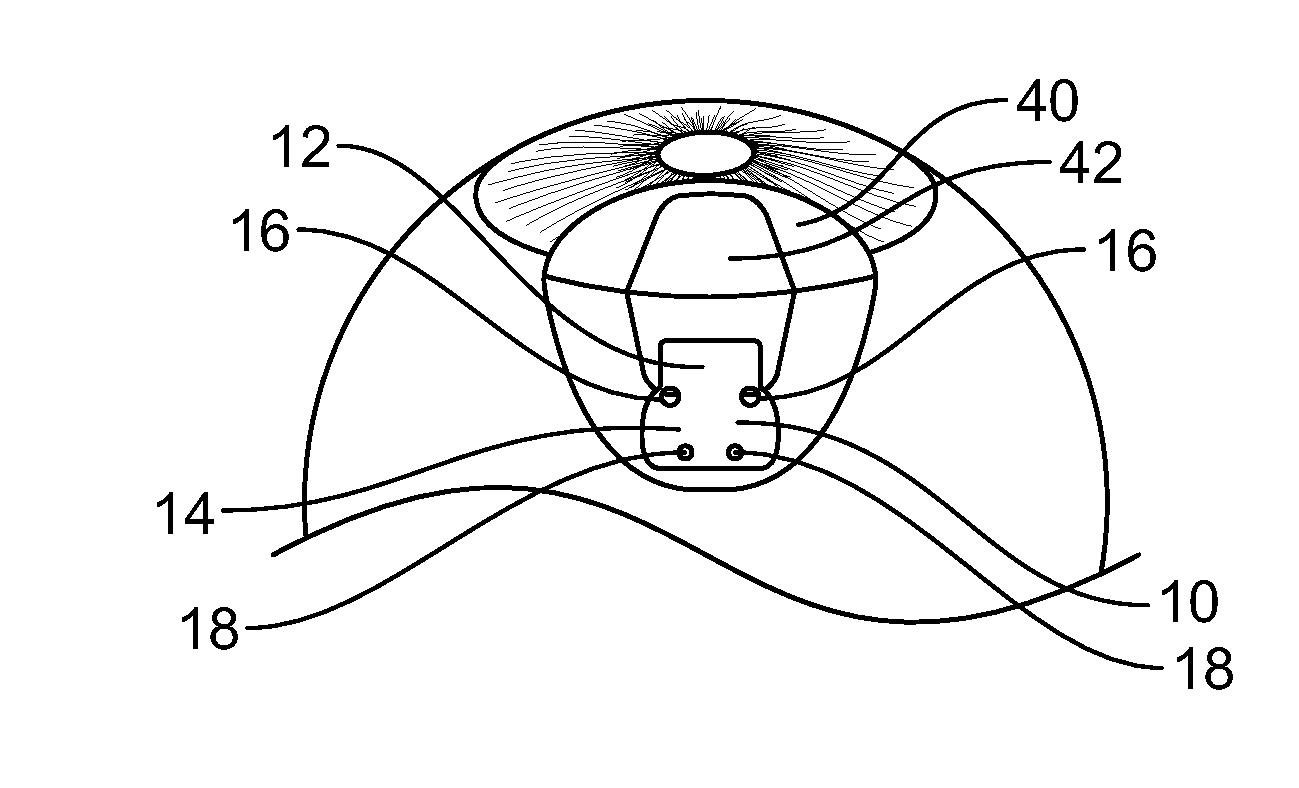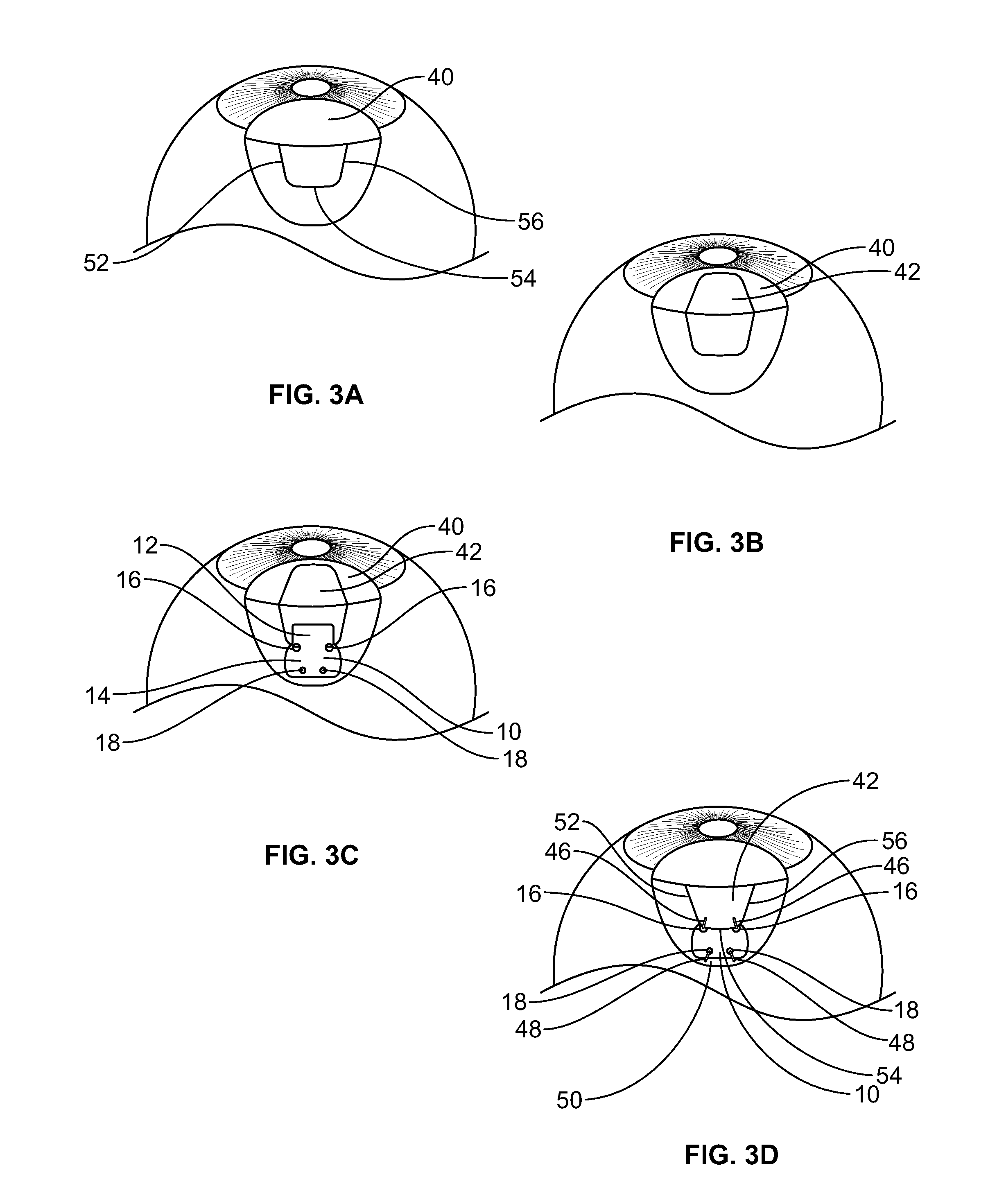Fiber matrix for maintaining space in soft tissues
a fiber matrix and soft tissue technology, applied in the field can solve the problems of progressive death of ganglion cells in the retina, eventual blindness, restriction of visual field, etc., and achieve the effect of maintaining space in soft tissues
- Summary
- Abstract
- Description
- Claims
- Application Information
AI Technical Summary
Benefits of technology
Problems solved by technology
Method used
Image
Examples
embodiment 80
[0072]FIG. 6 illustrates an example of another embodiment 80 of the invention. This embodiment includes a fiber matrix 82 in combination with a stretchable polymer 84 covering the fiber matrix 82. When aqueous humor penetrates the fiber matrix 82, it puts pressure on the stretchable polymer 84, causing it to stretch and expand. As it does so, it becomes more permeable, facilitating passage of aqueous humor through the stretchable polymer. In this way, more flow is inhibited initially, but over time and with increased pressure, more flow is permitted. When the pressure subsides, the polymer 84 contracts again. In this way, the polymer 84 acts as a pressure-regulating valve.
embodiment 90
[0073]FIG. 7 illustrates an example of another embodiment 90 of the invention. In this embodiment, a fiber matrix 92 is provided with a biodegradable coating layer 94 over each of its top and bottom surfaces. The material of each biocompatible coating layer 94 can be substantially inert to reduce reaction. When the fiber matrix is initially implanted, the coating layers 94 substantially inhibit flow. However, over time, as the biodegradable coating layers 94 erode, more flow is permitted.
[0074]As discussed above, another embodiment with a similar ability to allow increased flow over time is a fiber matrix comprising a first set of fibers formed of a biostable material and a second set of fibers formed of a biodegradable material. Over time, as the biodegradable fibers erode, more flow is permitted. In yet another embodiment with a similar ability to allow increased flow over time, a fiber matrix is made of fibers formed of a biostable material, and the fiber matrix is impregnated wi...
PUM
| Property | Measurement | Unit |
|---|---|---|
| thickness | aaaaa | aaaaa |
| thickness | aaaaa | aaaaa |
| thickness | aaaaa | aaaaa |
Abstract
Description
Claims
Application Information
 Login to View More
Login to View More - R&D
- Intellectual Property
- Life Sciences
- Materials
- Tech Scout
- Unparalleled Data Quality
- Higher Quality Content
- 60% Fewer Hallucinations
Browse by: Latest US Patents, China's latest patents, Technical Efficacy Thesaurus, Application Domain, Technology Topic, Popular Technical Reports.
© 2025 PatSnap. All rights reserved.Legal|Privacy policy|Modern Slavery Act Transparency Statement|Sitemap|About US| Contact US: help@patsnap.com



